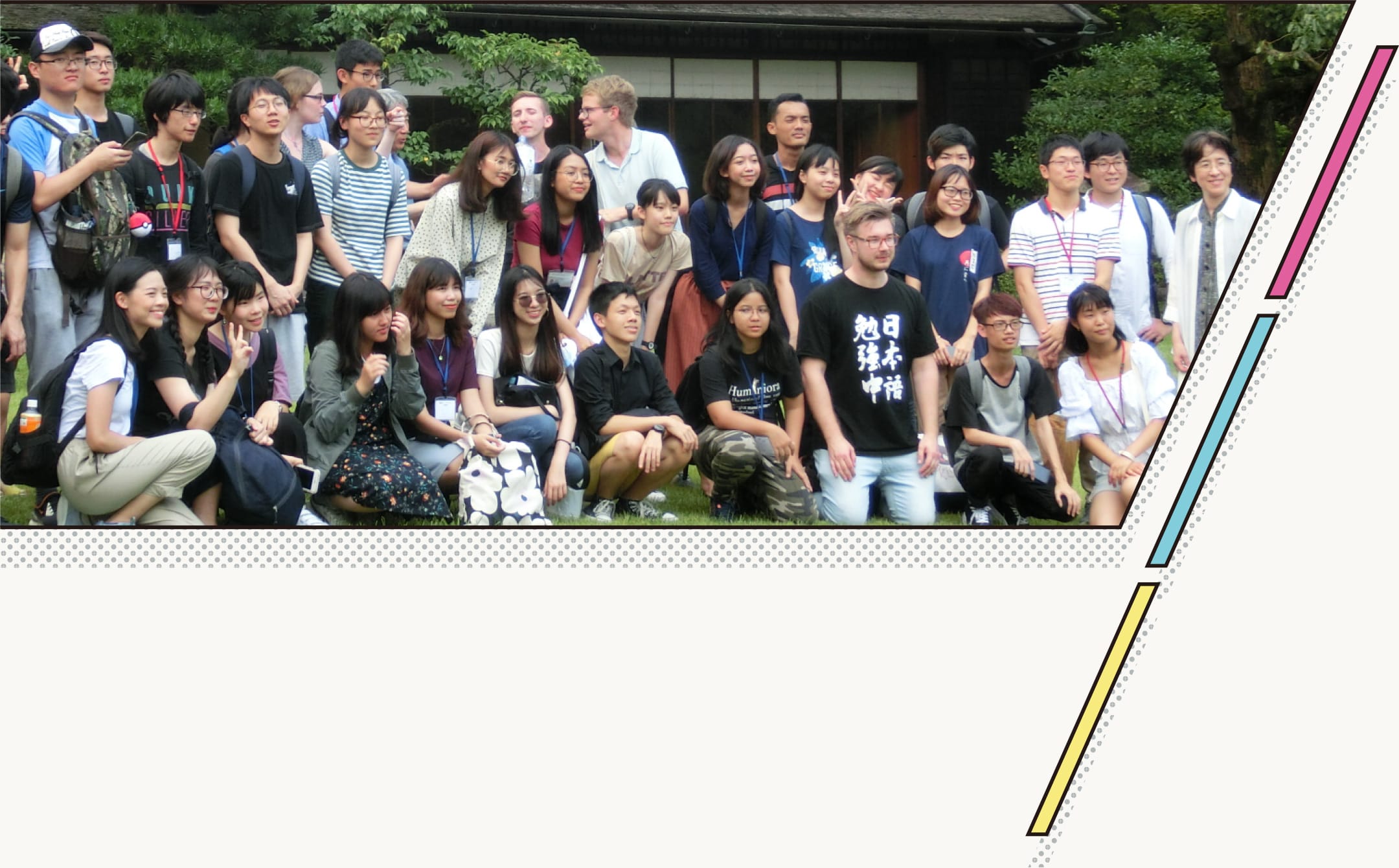
KYOTO SUMMER PROGRAM



Kyoto Summer Program is an annual short-term program opens to both international students from our partner universities around the world and domestic students enrolled at Kyoto University (KyotoU).
This program is a collaborative effort between the Kyoto University Institute for Liberal Arts and Sciences (ILAS) and Kyoto University Asian Studies Unit (KUASU). It is divided into two sub-programs: ILAS program, in which English is the main instruction language, and KUASU program, in which Japanese is the main instruction language.
Both sub-programs share a core curriculum that primarily aims to develop an understanding of the political, cultural, historical, social, and ecological issues facing Japan. Both provide opportunities to learn the Japanese language and to study with local students. The whole program is also designed to highlight KyotoU’s unique academic culture and cutting-edge research facilities. Kyoto University students (KyotoU students) join this program together to stimulate the opportunity of cooperative learning.

Please refer to the following PDFs for 2024’s program schedule (Tentative).
1.The program schedule 2024 (PDF)
2.List of Academic Lectures 2024 (PDF)
This program consists of four parts; Academic Lectures, Fieldtrip & Cultural Experiences, Interaction with KyotoU students and Japanese Classes.
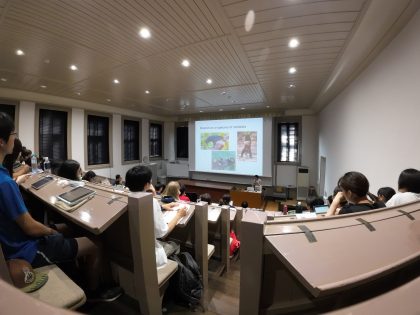
Nahoko TOKUYAMA Assistant Professor of Wildlife Research Center, KyotoU

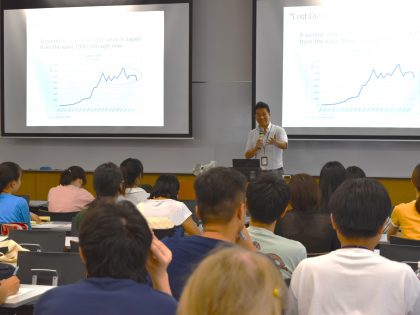
Takashi SEKIYAMA Associate Professor of Graduate School of Advanced Integrated Studies in Human Survivability, KyotoU

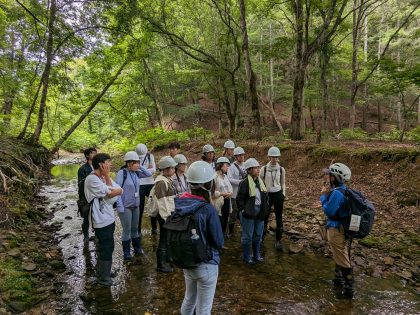
In collaboration with the Kyoto University Field Science Education and Research Center (FSERC), exploring Ashiu Research Forest provided eng…

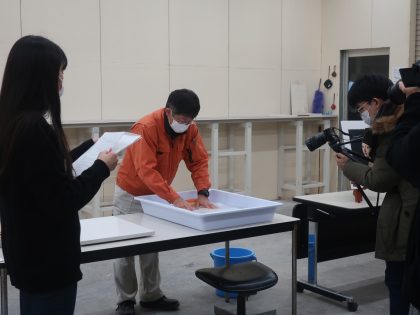
Kyoto is also a city known for its innovation and is home to many world-leading companies. With great supports from these companies, company…

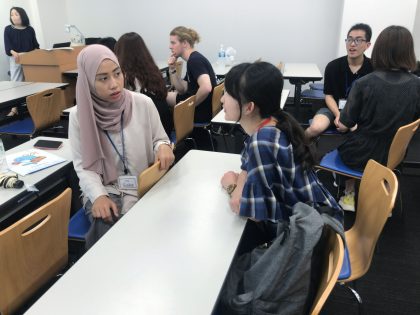
Before the program starts, KyotoU students take a preparation seminar for Japanese teaching practice. They join and work as tutors in Japane…

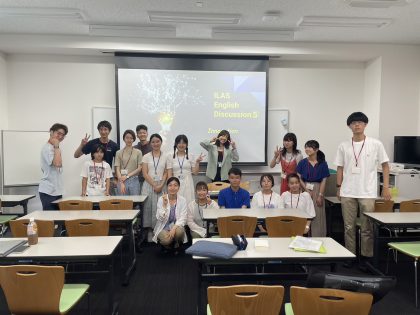
There are several discussion sessions which participants discuss diverse topics regarding the problems our world is facing today with KyotoU…



Program tuition fees are waived for the participants who are selected by the universities with special quota.
-------------------------------------------------------------------
JPY 52,000
For Individual applicants, please see the information below.
-----------------------------------------------------------------
All participants are required to stay at the designated accommodation facility throughout the program period. Reservations will be made by Kyoto U.

Participants in special quota
Students from universities with special quota allocated from Kyoto University (Listed above) cannot apply through individual application.
Please apply through the department in charge at your university.
---------------------------------------------------
For 2024 Summer, the application has closed.
FOR INDIVIDUAL APPLICANTS ONLY.
---------------------------------------------------
For 2024, a maximum of 2 students (ILAS program) from partner universities worldwide will be accepted. If a large number of highly qualified students apply, it is very likely that we will accept more than two students. We are seeking students from a wide range of majors and therefore accept applications from students from any department.
Applicants must be students from (a). universities that hold academic cooperation partnerships* or student exchange agreement** with Kyoto University ;
AND (b). universities that have NOT been allocated a special quota for this year's program by Kyoto University***.
When you are an international student studying abroad, university means your home university.
*List of universities: academic cooperation partnerships
**List of universities: student exchange agreement
***List of universities: special quota universities
Please refer to the "Call for Application" for further details.
Call for Application for Individual Application (2024): please click here
JPY 52,000
1. Prior Confirmation
Students who wish to participate in the program should make prior confirmation to check their eligibility. Please submit necessary information via the following form. Deadline for prior confirmation is Japan Standard Time (JST) 12:00pm (noon), May 20, 2024 (It is already over for 2024).
The Program office will check the student’s eligibility and contact the student with further instructions, including the URL for the application system.
2. Application (when you are eligible)
All application will be done through an online application system. The URL will be disclosed to the students directly from the Program office. Once students have received the URL, please read through the "Call for Application" carefully, and make the application according to the instructions. Deadline for application is JST 12:00pm (noon), June 3, 2024.
3. Selection
If necessary, selection will be made by the Program office. Students will be notified of the selection results by JST June 5. Final notification of acceptance into the program will be sent after confirmation of the payment of the participation fee.

Once of the best thing I liked about the program is definitely the interaction that we had with the Kyoto Students and definitely the bonding that we developed during these two weeks. I think what we don't notice the most is the effort that the KU students made to ensure that we feel comfortable and not left out. A lot of us didn't come with our friends and majority of us have almost no knowledge of Japan, so it was really heartwarming to see that the KU students wanted to interact with us even outside of school and on our free days!

日本人と外国人の友達ができた。色々なことを一緒にやって、とても楽しかった。 あとはたくさん日本語話せること。初めてこんなに日本語を話すチャンスがあるので。 とてもうれしかった。

What is effective as an academic program is the combination of lectures and student activities. Especially, ILAS Discussion is completely up to students, and they can join it actively.


Please contact < kyoto_summer*mail2.adm.kyoto-u.ac.jp > (* → @) for any questions regarding the program.
KAWAI Junko, Professor, Institute for Liberal Arts and Sciences, Kyoto University/Unit member, Kyoto University Asian Studies Unit
HAN Liyou, Associate Professor, Institute for Liberal Arts and Sciences, Kyoto University
WAKAMATSU Fumitaka, Program-Specific Associate Professor, International Academic Research and Resource Center for Language Education, Institute for Liberal Arts and Sciences, Kyoto University